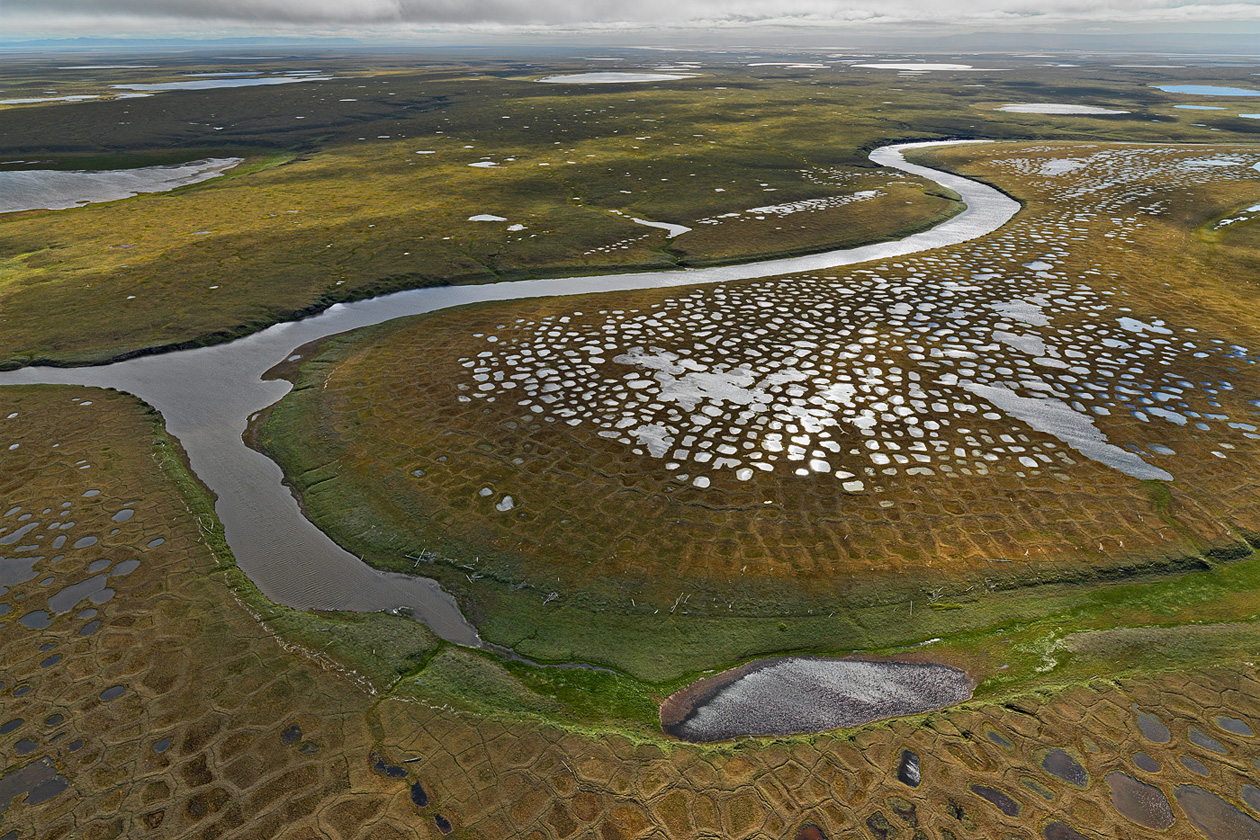
Permafrost
It may be hard to believe, but 25 per cent - a quarter of the surface of our planet - is in a firm grip of permafrost. In all countries around the Arctic Ocean, from Siberia to Alaska, in parts of Iceland, Scandinavia and China, in the few ice-free expanses in the Antarctic and especially in high mountain regions, the subsoil is permanently frozen to a depth of 20 metres in Scandinavia and more than 1,500 metres in Siberia. Only the top layer of the soil thaws in summer. As the melt water cannot seep through the icy subsurface, it gathers in countless ponds and lakes.
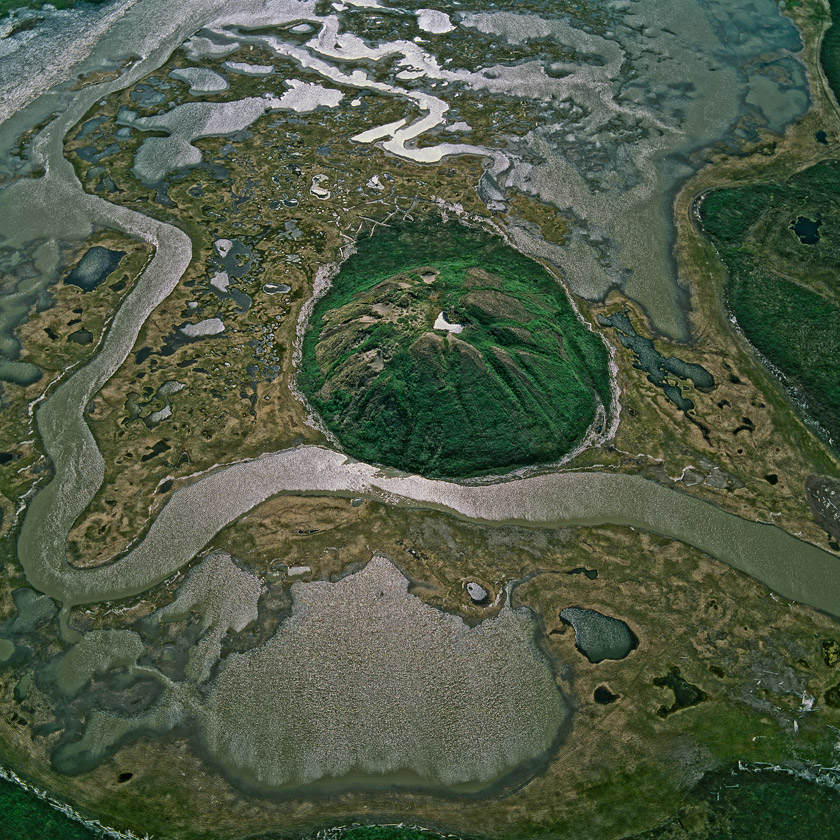
Permafrost areas are home to many extraordinary landscape forms such as pingos, which are formed in the permanently frozen soil of the Arctic tundra. Pingos are mounds of earth-covered ice. They are commonly formed in drained lakes created by permafrost water when the top layer of the soil thaws in summer. In winter, when the surface freezes again, ice lenses can form in the subsoil and can grow in size and height each year, pushing up the layer of vegetation covering them. Pingos can reach up to 50 metres in height.
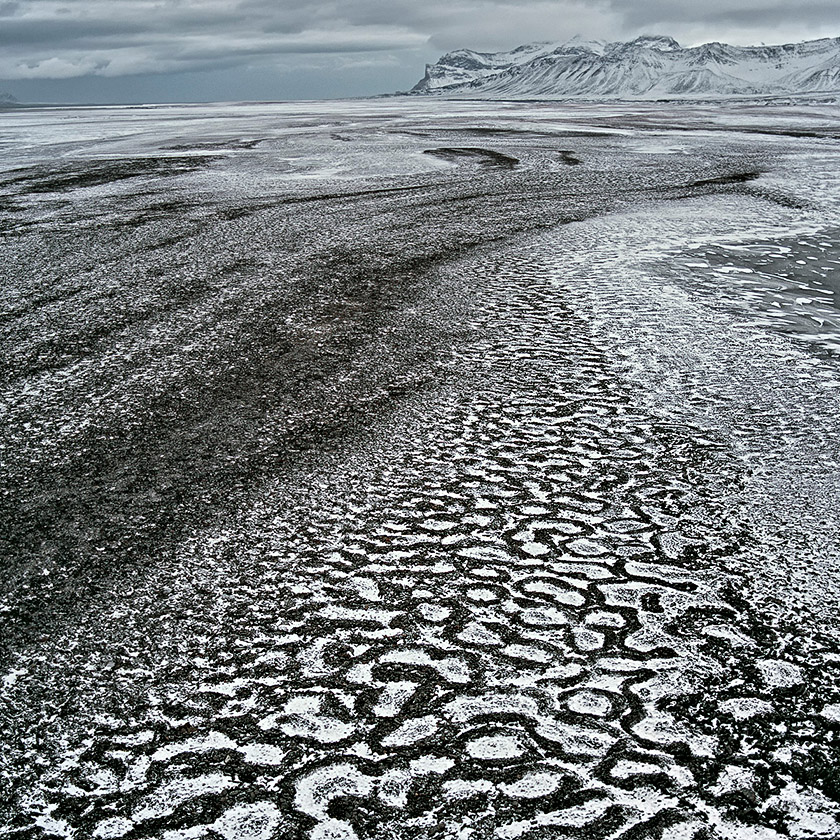
When the permanently frozen ground contains many stones, circular stone structures can form. Like pingos, they are formed as a result of the alternation between freeze and thaw of the surface during the Antarctic summer, when the temperatures can reach even 20 degrees Celsius. While freezing, the soil drenched in permafrost melt water contracts, and while thawing it expands again. During the contraction freezing pore water is pushed upwards together with the larger stones set in the soil. When they reach the surface, the larger stones tilt and eventually roll to the side, building up stone circles or stone nets, with finer grained sediments in the middle. This process, however, has not been thoroughly clarified yet.
-
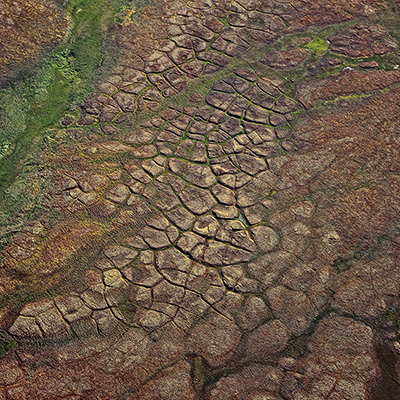
Polygonal soil, Vaygach Island, Russia 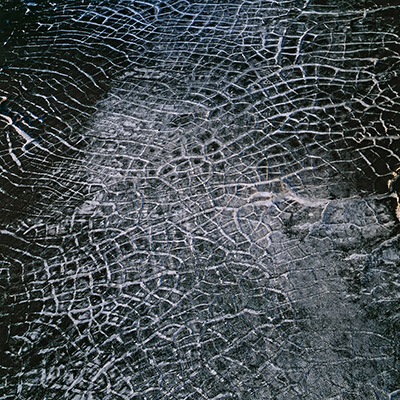
Fresh snow on polygonal soil, Spitsbergen, Norway -

Polygonal soil near Shingle Point, Canada 
Stone circles, Spitsbergen, Norway (3 m in diameter)
If the top layer of the permafrost soil is homogenous and fine-grained, polygon ground patterns build up as a result of the alternation between freeze and thaw. In winter, when the thaw layer freezes, the homogenous mass rips. Melt water, which seeps into the crevices in the thawed ground during the Arctic summer, freezes again the following winter. As it freezes, it expands and like a wedge driven underneath the surface, gradually pulls apart the clumps of the soil. So called ice wedges form in the cracks, creating a net-like patterns across the surface.
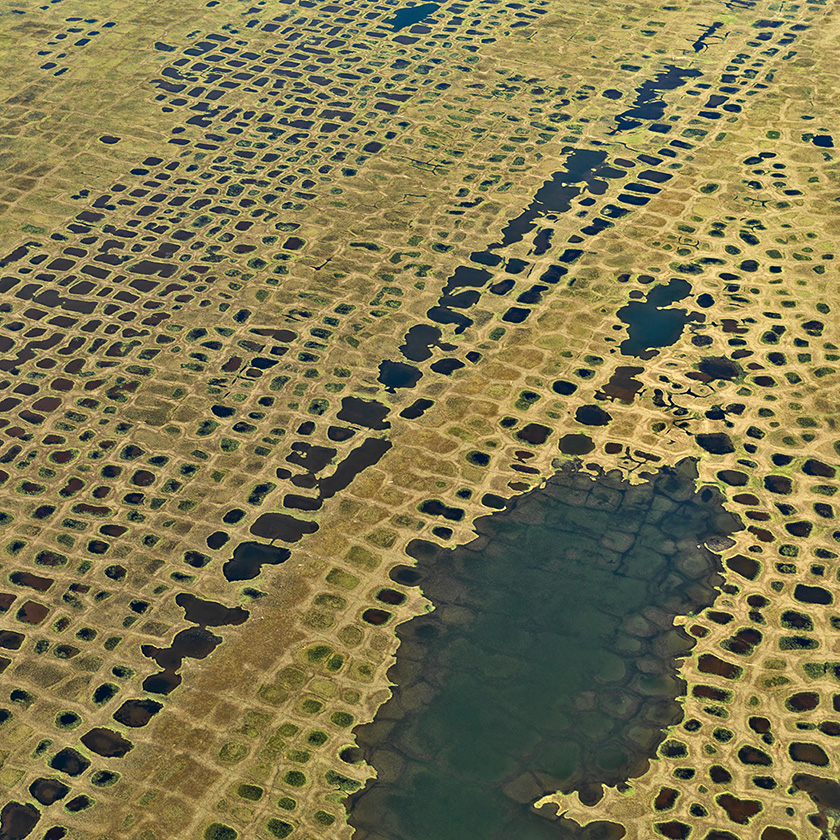
Permafrost soil is very sensitive to climate change; its thaw layer becomes thicker and thicker in the summer months and more and more melt water comes into being. Above all, huge amounts of carbon are locked in the tundra soils of Siberia, Alaska and Canada, which to a great degree consist of deep layers of decomposed plants. Bacteria have transformed part of them into methane – a greenhouse gas. Due to an increase in global warming, even more methane is be released from the thawing permafrost soils and with it, the already existent greenhouse effect reinforced.
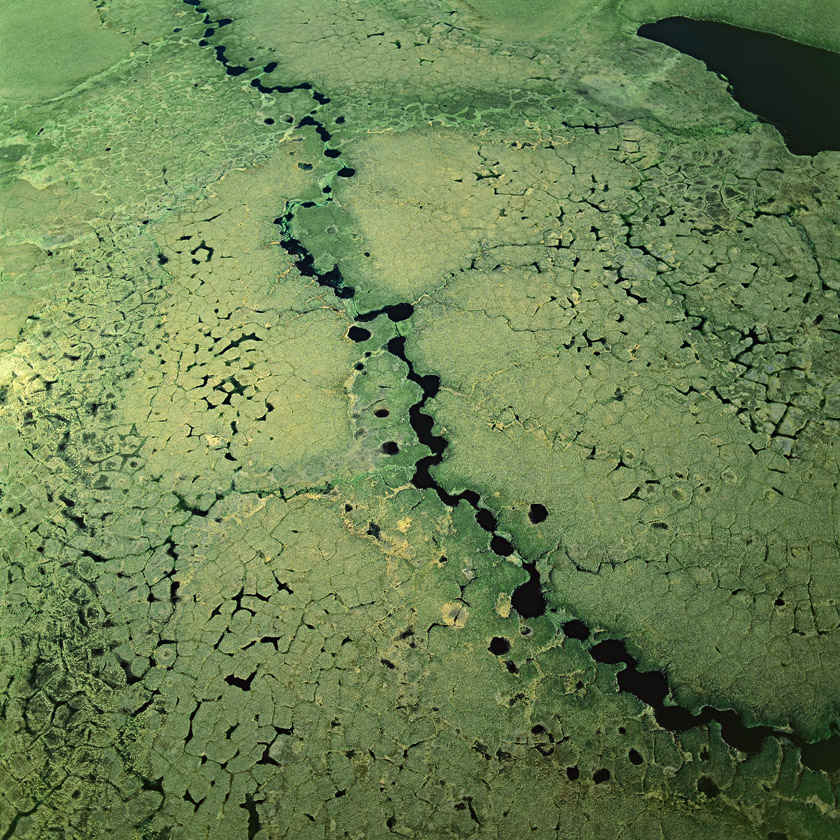
Where does permafrost come from? Permafrost soils are the remnants of the last Ice Age period during which temperatures worldwide were much lower than today. Pre-eminently, the areas such as Siberia, which at that time were not protected by ice blanket, were exposed to frost over hundreds of thousands of years. In this way, hundreds of metres deep permafrost layers could build up in subsoil and survive till today.


No comments